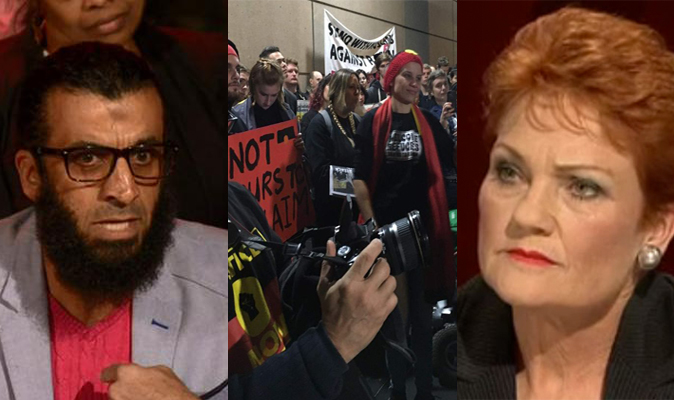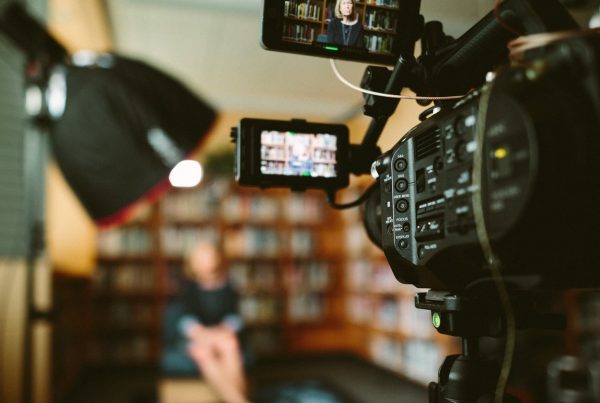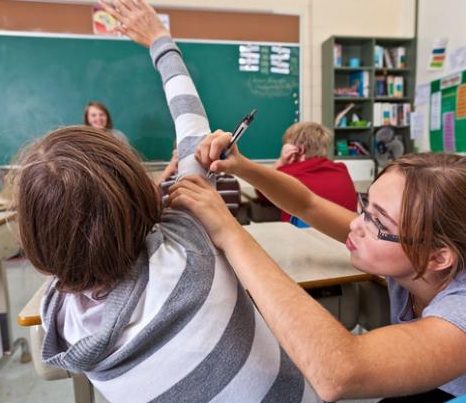ABC bashing – a poor sport

On Saturday the Minister for Communications, Mitch Fifield, was reported in The Australian as asking the ABC to ‘Please Explain’ over a question from a Muslim speaker in last week’s Q&A who challenged Pauline Hanson about inciting Islamophobia. The complaint referred, not to his comments on the program, but to Khaled Elomar’s prior form, which included insulting people on social media.
Hands off the ABC
I doubt, given his credentials, that Mitch Fifield misunderstands the way the media should (and mostly does) work. Which makes his complaint all the more unusual. ABC-bashing is normally the modus operandi of people on the extremes.
There is little surprising to me in the way Q&A works. Like all programs of its type it picks a hot topic and proactively searches for diverse views. While the producers will have an eagle-eye out for controversy to ensure the program’s success, there is a greater public benefit – the viewers find out what everyone else is thinking. Hence having someone like Pauline Hanson on Q&A to express her extreme views is a good idea, as is extending an invitation to people on the other extreme who disagree with her.
When we produced the first stories on Hanson on 60 Minutes after she first entered parliament I rang Malcolm Fraser for an interview, and he argued with me that we shouldn’t do the story because of the damage caused by giving her air-time. I argued back, that the better option was for us to look for people to counter her views. About a day later he agreed to the interview. His was one moderate voice amongst many extreme opinions in the stories.
The ABC’s policy refers to this issue under ‘Standards’ (and the minister would know this) stating that the ABC should:
4.2 Present a diversity of perspectives so that, over time, no significant strand of thought or belief within the community is knowingly excluded or disproportionately represented.
Stacking the audience
The trick for a program like Q&A, with a live audience, is to balance the extremes with a breadth of views, and generally I think it does that. If the producers create a situation that goes pear-shaped occasionally, I’ll allow them that because getting live-TV right all the time is beyond the capability of the best. But this is not one of those occasions.
When I was at ACA and 60 Minutes we used to do a lot of studio debates, mostly with 25-50 people, but occasionally with larger numbers of guests. I don’t know how Q&A approaches them, but I thought those live audiences were nightmarish to organise, and I suspect Q&A does what we used to do – work to get everyone’s views represented. It’s a major task, getting medical, legal, ethical, left, right, middle, extreme, country, women’s, aboriginal, everyone’s views. And all this has to happen in a short time-frame so that the current topic didn’t become ‘old news’. Plus, everyone has to be ‘good talent’, so we used to stack the studio with the best talent possible and on the extremes this naturally included those that were outrageous.
We would vet people’s views so that only one or two would express a particular view, so that across the group we had diversity.
Then, come show-time, the compere would try to make sense of it all by giving an opportunity to the extremes as well as the middle so that by the end of the program the issue had been broadly canvassed and the viewing-audience understood the depth and breadth of the issue being discussed.
But no-one wants a boring debate, so the compere also hunts for the interesting exchanges – including those on the extreme – because he or she knows that one strong exchange gets remembered above 20 others, because only a few in the viewing-audience are truly fascinated by the mundane. In defence of the technique, normally when two extremes argue, both opinions get expressed, and most of the viewing audience recognises them for what they are – two outliers.
So if Pauline Hanson is on the program, it’s natural to include on the program the people most opposed to her because they are going to ask the most challenging questions. Same if the focus is on someone from the extreme left, or if it’s Germaine Greer, or any other controversial person. With Cardinal Pell you would include those who have been most abused, as well as a range of others.
That, I suspect, is what happens at Q&A. I think the program’s producers are skilled, and Tony Jones is clever to manage the challenge every week.
However, I think the Minister for Communications’ attempts to influence the editorial policy of the ABC via the media is wrong. He should be above that. If he wants to tinker with ABC editorial policy, then that takes care, because he’s tinkering with probably the most valuable single influencer of Australian culture.





